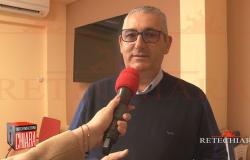The Archaeological Park of Herculaneum It offers an extraordinary window into the Roman past, preserved almost unchanged since the eruption of Vesuvius in 79 AD. Recognized as a UNESCO World Heritage Site since 1997, the site reveals details of daily life and homes of the time with an unparalleled level of detail. This article explores the historical, architectural and cultural details that make Herculaneum a site of global interest, highlighting its peculiarities compared to other archaeological sites.
Archaeological discovery in Herculaneum: historical and cultural importance
Herculaneum, a small town at the foot of Vesuvius, was buried by the same eruption that destroyed Pompeii. Systematic excavations have revealed a variety of artifacts that offer a unique window into the daily life and social conditions of Roman times. Among the most relevant discoveries:
- Luxurious villas with frescoes well preserved, which tell mythological stories and details of daily life.
- Items of daily use such as vases, kitchen utensils and jewellery, which allow us to better understand domestic habits.
- Public and private structures which outline a precise social and urban organization, testifying to the advanced Roman construction technology.
Herculaneum offers a detailed understanding of the historical, economic, and cultural dynamics of the Roman Empire, allowing scholars to imagine scenes of daily life and social systems of the time. The stratification of buildings and depositions of ash and lapilli allows us to study the long-term effects of eruptions on local communities and urban architecture.
Conservation and restoration in Herculaneum: advanced techniques
The challenges posed by the conservation of Herculaneum are immense. Thanks to cutting-edge technologies, it is possible to ensure the survival of the site for future generations. Among the main technical innovations:
- Microclimatizationa system that regulates the microclimate around the finds to prevent damage caused by climatic variations.
- Laser for cleaning surfaceswhich removes sediments and encrustations without damaging frescoes and mosaics.
- Raman spectroscopywhich allows you to analyze the chemical composition of pigments in frescoes without taking samples.
International collaboration is crucial in the restoration and conservation of Herculaneum. The Herculaneum Conservation Project is a multidisciplinary initiative that focuses on the conservation of buildings and the sustainable development of the surrounding area. Seminars, workshops and interdisciplinary collaborations guarantee the adoption of advanced methods and technologies for conservation.
Sustainable tourism and archaeological park of Herculaneum
The approach to sustainable tourism requires reflection on how visitors can contribute to the conservation of the site. Some guidelines include:
- Minimize environmental impactreducing the use of single-use plastic and respecting designated paths.
- Support the local economypreferring services offered by local professional guides.
- Respect for antiquityscrupulously following all the instructions provided at the entrance and inside the park.
The park provides educational resources that enrich the visitor experience, such as information materials, awareness programs and volunteer initiatives. These responsible behaviors allow visitors to enjoy the beauty and history of the site, actively contributing to its conservation.
Conclusion
The visit to Archaeological Park of Herculaneum offers a unique immersion in the dynamics of ancient Roman life and the catastrophic eruption of Vesuvius in 79 AD. The data accumulated through systematic excavations and advanced restoration techniques make Herculaneum a paradigmatic case in global archaeological studies, significantly contributing to the understanding of our historical and cultural.
The authenticity and state of conservation of Herculaneum, supported by continuous conservation efforts and scientific studies, emphasize the importance of protecting historic sites and the need to invest in technologies and methodologies that can enable their perpetuation. Herculaneum’s role is not only that of guardian of the relics of the past, but also as a catalyst for reflection on contemporary conservation practices and management strategies for archaeological sites globally.




